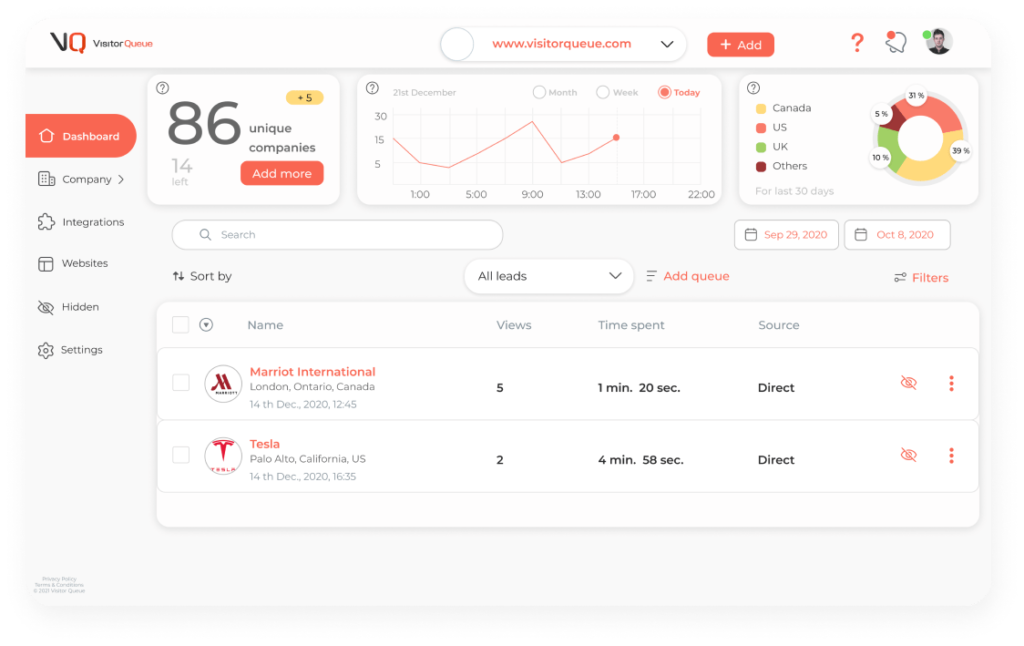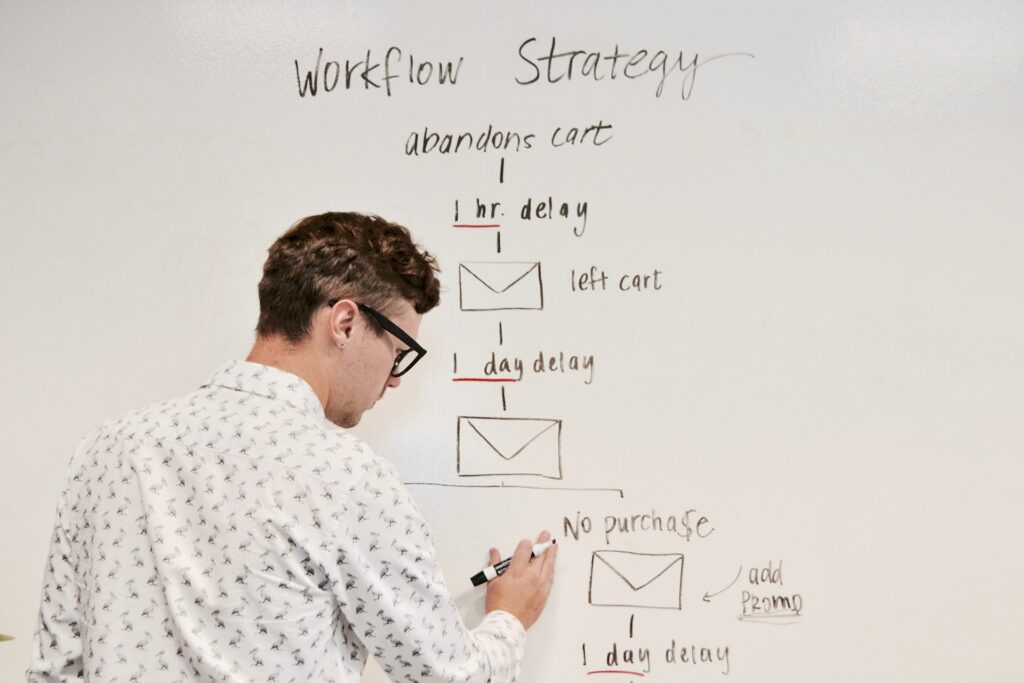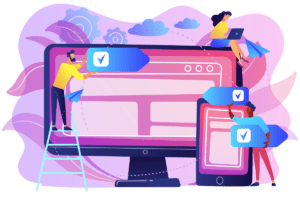Segmentation is one of the most underrated aspects of marketing. By properly segmenting your prospects, you can better understand your audience and cater to their needs. In fact, companies that segment their customers are 130% more likely to know their customer’s motives. In order to fully understand your customers and improve the quality of your leads, you’ll need to segment your leads. First, let’s go through a definition of what lead segmentation is.
Understanding Lead Segmentation
Lead segmentation involves dividing your audience into distinct groups based on shared characteristics, behaviors, or demographics. Rather than treating all leads equally, segmentation allows you to tailor your marketing efforts, messaging, and offerings to specific segments. By doing this, your marketing efforts are more likely to lead to a conversion, since your leads see content that is only relevant to their needs.

Why Lead Segmentation Matters
As a B2B SaaS company, it’s essential to properly organize your leads in order to convert them into paying customers. Here are a few reasons why lead segmentation matters when you need to improve lead quality.
Personalized Communications
Segmentation enables personalized marketing efforts, allowing you to address the unique needs and pain points of your audience. Personalization fosters stronger connections, therefore increasing the likelihood of conversions. You can implement personalization strategies on your website, email campaigns, and social media campaigns to encourage touch points at every step of the way.
Improved Targeting
By targeting specific segments of your audience, you can focus your resources on those that are the most likely to convert. This enhances efficiency and ensures that your marketing efforts resonate with the right audience at the right time. This can also help you automate lower-quality tasks, and let your sales team prioritize your higher-quality audience.
Enhanced Conversion Rates
Segmented campaigns tend to yield higher conversion rates. This is because they are designed to appeal directly to the preferences and interests of each segment. And, this tailored messaging can result in higher-quality engagements and conversions. If you think about it, a startup with 3 employees has much different needs than an enterprise-sized company with hundreds of employees.
Top Ways to Generate High-Quality Leads
Before you start segmenting your leads, you have to generate the leads. Here are a few of the top ways that SaaS companies can generate high-quality leads.
Referral Programs
Try to encourage your current customers to refer others to your company through referral programs. Word-of-mouth recommendations can carry a lot of value in B2B circles and can often result in high-quality leads with a built-in level of trust. When you ask your current customers to refer something, make sure you give them a reason to do it. They’ll want to know what’s in it for them and their efforts. Entice them with an Amazon gift card or recurring profits off of each referral.
Content Marketing
The term content marketing is fairly broad. Content marketing includes blogging, video marketing, hosting a webinar, gated content, creating infographics, and more that address the pain points and challenges of your target audience. With your content, offer insights, solutions, and best practices relevant to their industry. By positioning your brand as a thought leader, you can attract leads who are genuinely interested in what you have to offer.
Social Media
Social media, particularly LinkedIn, is a great place to engage with your prospects. Here, you can share valuable content, participate in discussions, and learn more about what your audience is looking for. You can also utilize targeting options to reach specific segments of your audience and nurture relationships over time with paid advertising.
Identify Your Website Visitors
When you leverage content marketing, Google Ads, social media, and almost any other type of marketing, you are focused on increasing the number of visitors to your website. Although Google Analytics can show you how many visitors you have, you still may be wondering who the visitors are. With the help of Visitor Queue, you can find out exactly what company visits your website, how they got there, the pages they viewed and for how long. Additionally, we provide a description of the company including their location, employee count, industry, and more. This can help you see if your marketing efforts are attracting the right kind of audience. And, we also provide employee contact information to help you reach out and ensure they found what they were looking for. 98% of your website visitors leave without a trace, it’s time to find out who they are.

Segmentation Techniques for B2B SaaS Companies
Now that you know how to generate high quality leads, let’s go over how to segment your new leads in order to increase your conversion rate.
Behavioural Segmentation
Behavioral segmentation is when you analyze user behavior to identify patterns and preferences. Segment your leads based on their interactions with your website, email campaigns, or product features that they use or don’t use. For example, you could categorize your leads as “Active Users”, “Trial Users”, or “Engaged Subscribers”. Then, you can use each of these segments to provide additional content and resources that resonate with their needs. You wouldn’t send the same content to your long time active users as free trial users.

Firmographic Segmentation
Firmographic segmentation refers to sorting your leads based on data like company size, industry, revenue, or geographic location. This allows you to customize your messaging to suit the unique needs of different businesses or sectors. As an example, if you are selling your software to healthcare organizations, you can send them content about how your software is HIPAA compliant. Of course, not all industries would need this information, but it’s critical for healthcare organizations.
Lifecycle Stage Segmentation
The lifecycle stage segmentation is where you classify leads according to where they are in your sales funnel. There’s a big difference between leads when they’re in the awareness, interest, desire, and action stages. Because of this, they shouldn’t all be treated the same. Deliver targeted content and resources that align with their current needs and objectives, guiding them toward conversion.
Leverage Your CRM to Improve Lead Quality
When you want to improve lead quality, your CRM should be your right hand man. A CRM, like HubSpot or Salesforce, gives you a place to store and analyze valuable customer information. When you add new contacts to your CRM, you can automate how they are tagged, what emails they will receive, and more based on how they are segmented. By using your CRM to help with your segmentation, you can deliver a more personalized experience without the hard work of manually segmenting and tagging your leads.
Final Words
If you are looking to improve lead quality and convert more leads into paying customers, lead segmentation can help. By segmenting your leads, you can understand their needs, cater to their needs, and convert more leads into paying customers. It can take some time to set up segmentations and automate processes in your CRM, but once you have it all set up, it can save you a ton of time and help you drive an impressive ROI. As always, if you have any questions about using Visitor Queue to generate leads, do not hesitate to contact us.
 Identify
Identify Personalize
Personalize Benchmark
Benchmark Agencies
Agencies Integrations
Integrations Case Studies
Case Studies Use Cases
Use Cases Blog
Blog Resources
Resources









